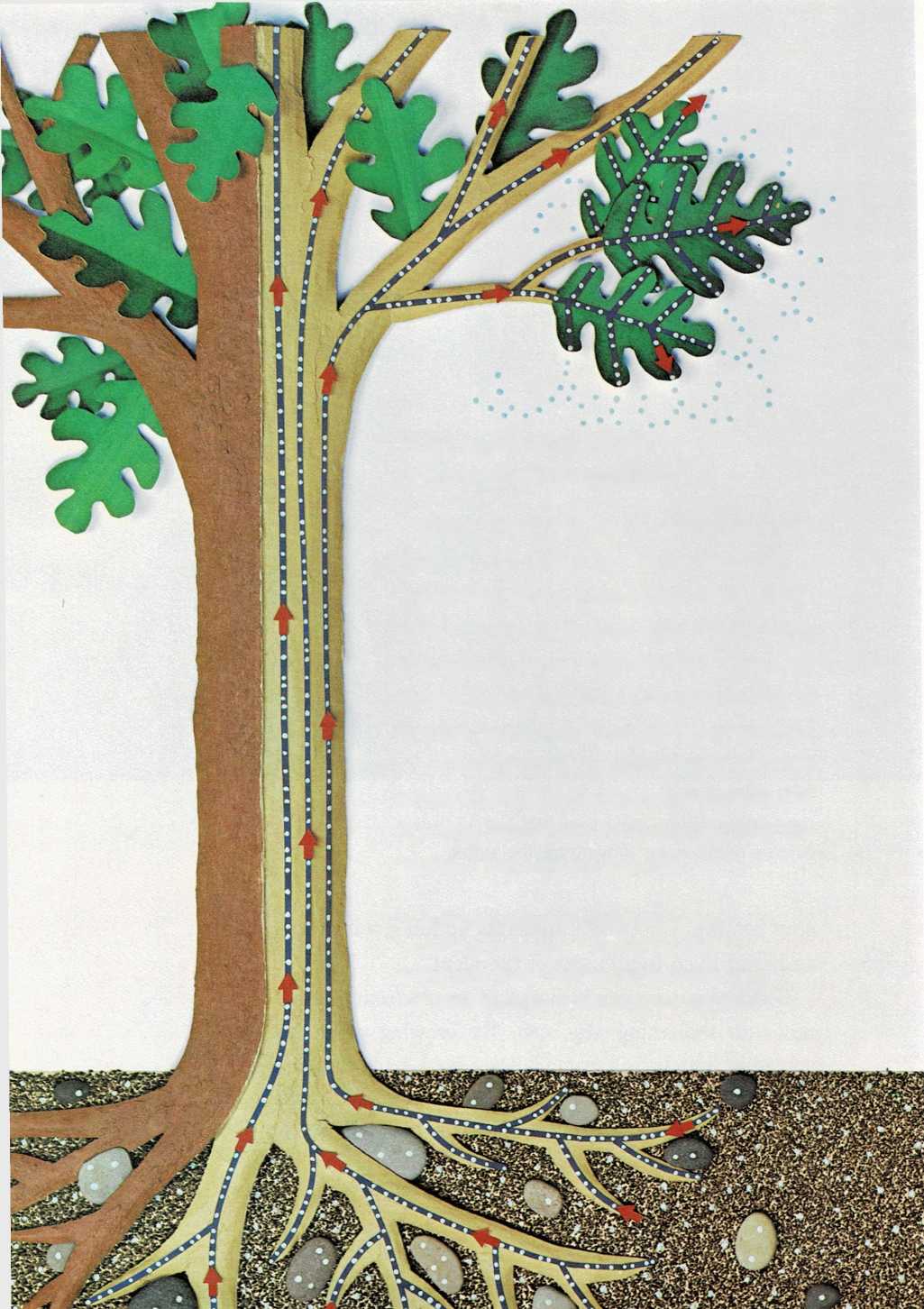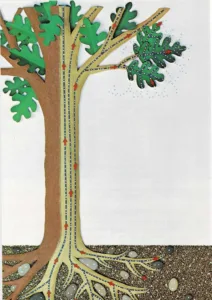
Why some trees lose their leaves in autumn
Many trees that live where winters are freezing cold lose their leaves
each fall.
Leaves make the food that keeps a tree alive. But to make food, and to
stay alive themselves, leaves need water. A tree gets water from the
ground. The roots take it in and the leaves pull it up through the
trunk.
In late summer, a thin layer of cork grows where each leaf’s stem is
attached to the twig. Water can no longer get into the leaves. They dry
up and die.
In summer, a tree’s roots take water (dots) from the soil. The red
arrows show how water moves up the tree, into the leaves. Some goes
out into the air.

Plant Ways \| 35
Wind tears the dead leaves from the branches. There is no reason for a
tree to keep its leaves in winter. There is no water for them. In
winter, the water in the ground turns to ice. The roots can’t take in
this frozen water.
But in springtime, the ground warms up. The ice melts. Rain and melting
snow fill the earth with water again. Then a tree’s roots start taking
in water and the tree grows new leaves.
In autumn, the tubes that bring water to the leaves close up. Without
water the leaves die and fall. Water stays in the tree in winter, but
doesn’t move.

